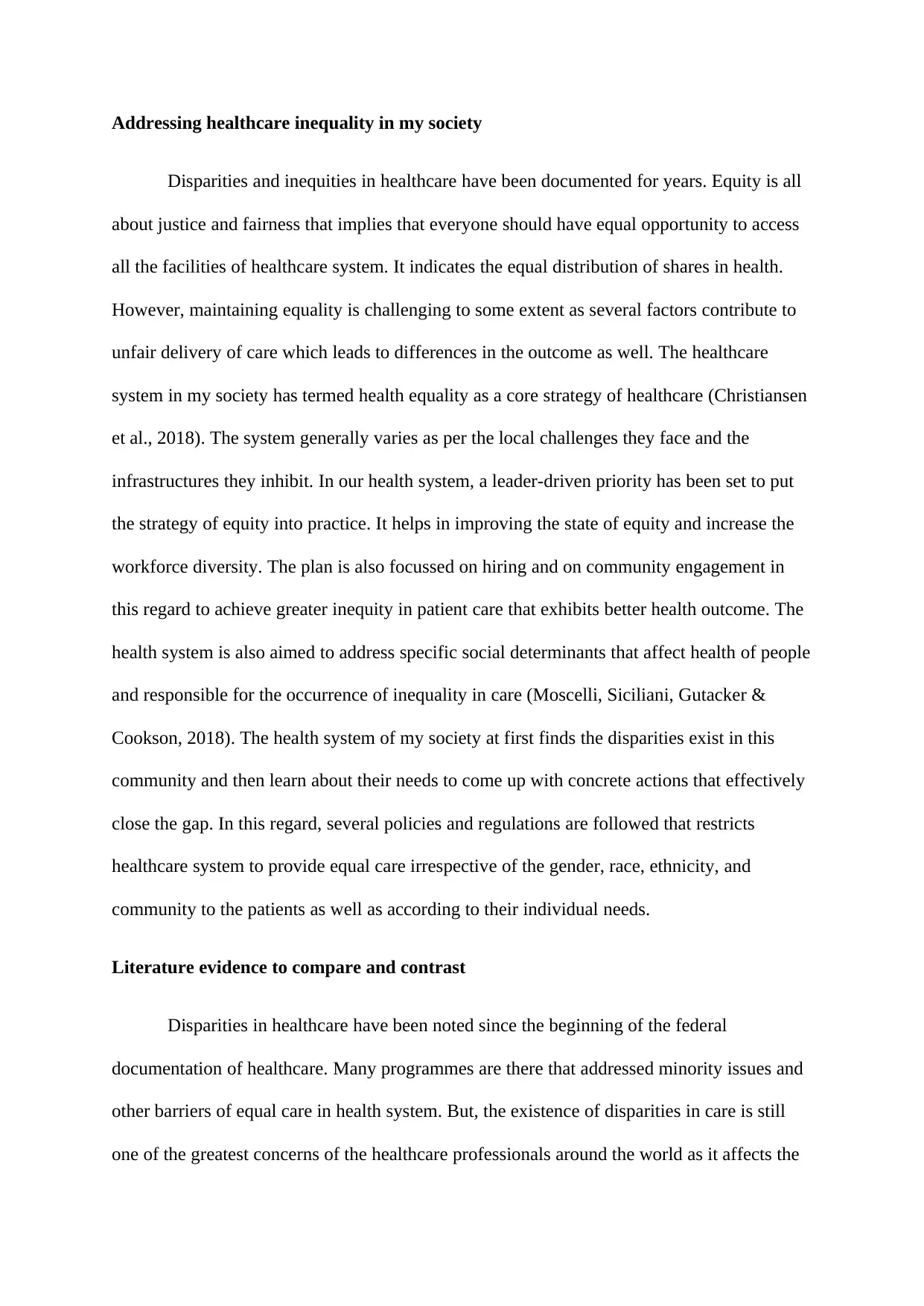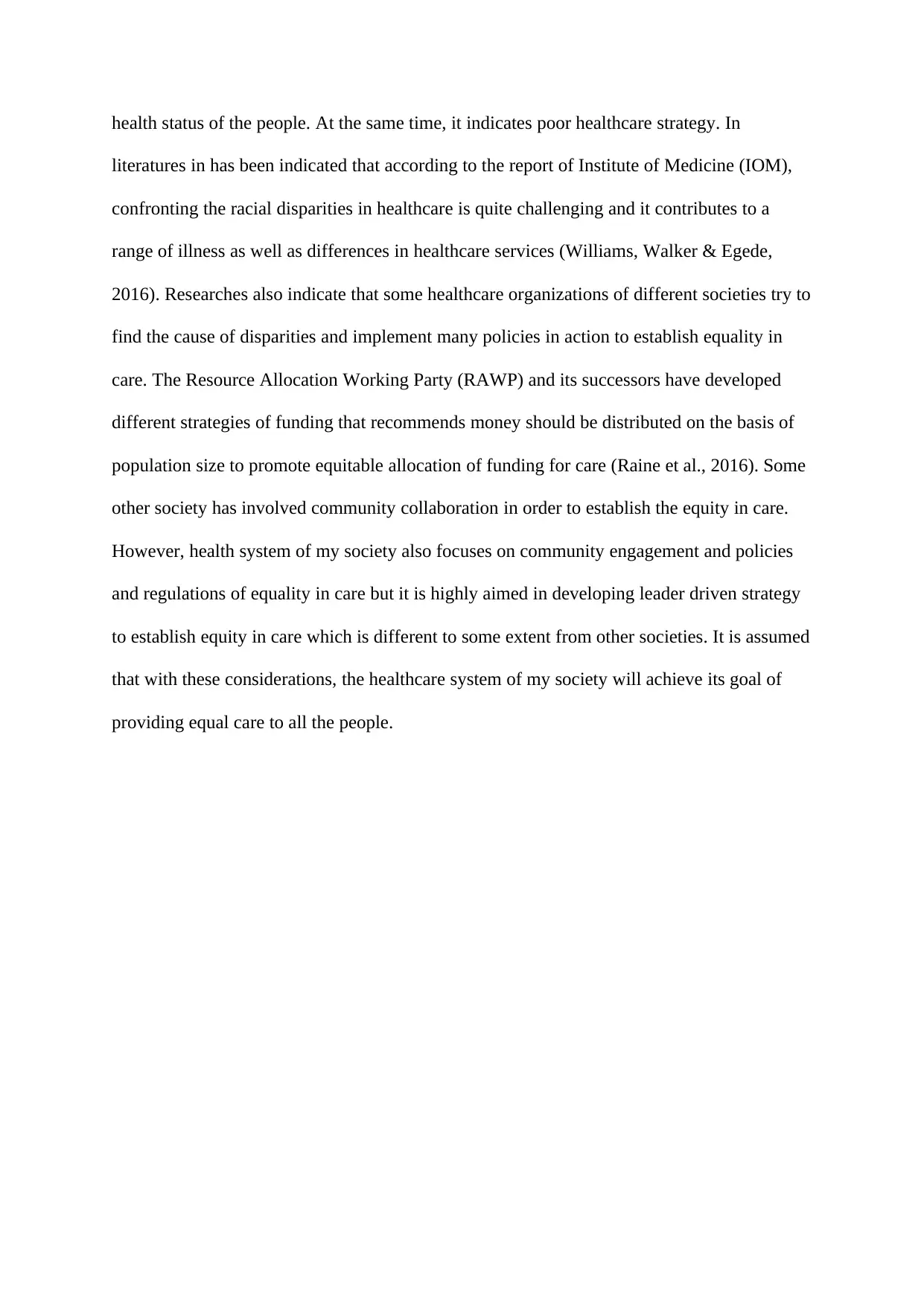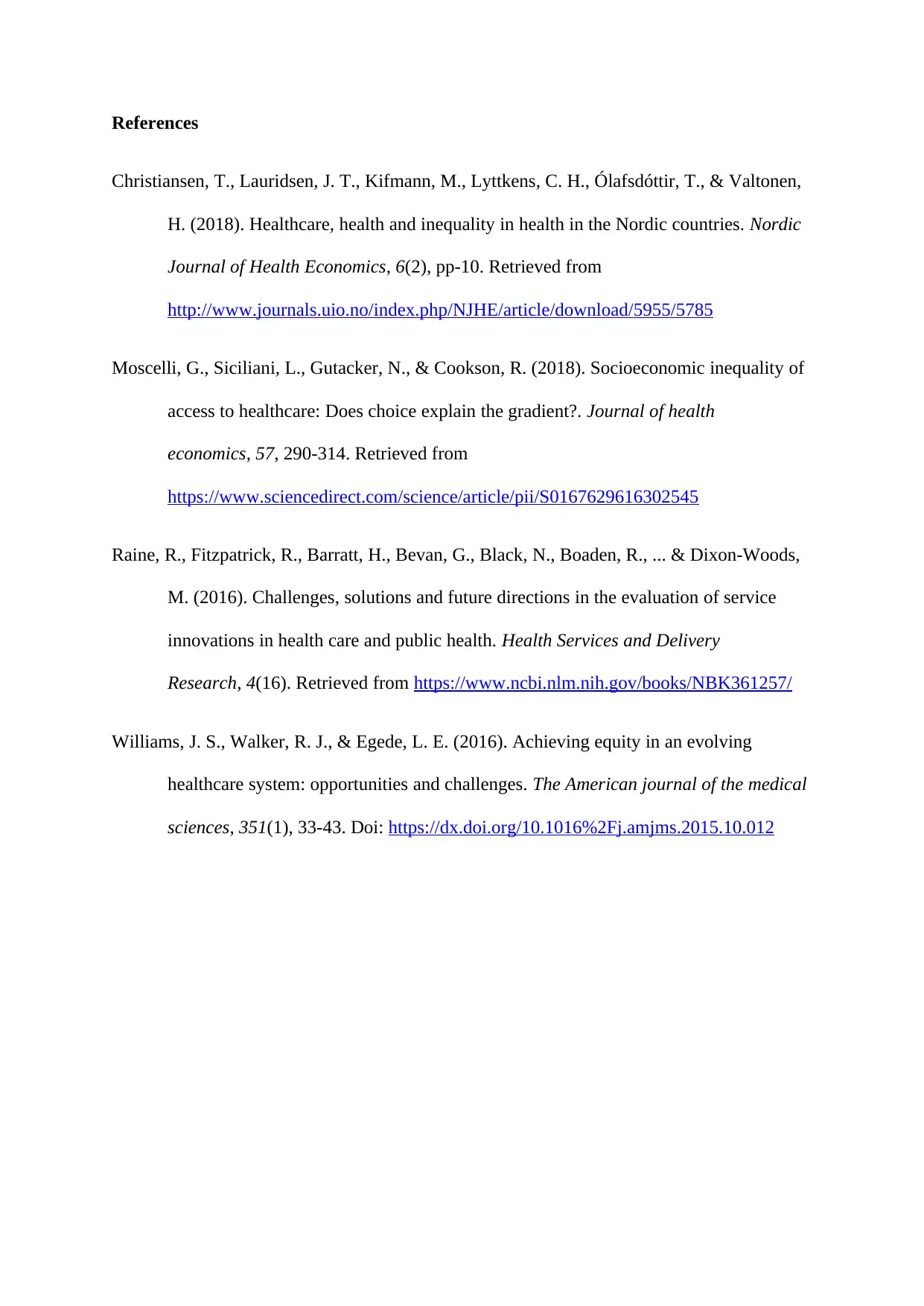Addressing Healthcare Inequality in My Society: Essay Analysis
VerifiedAdded on 2022/12/29
|4
|829
|68
Essay
AI Summary
This essay delves into the critical issue of healthcare inequality within a specific society, highlighting existing disparities and inequities in healthcare access and outcomes. The author emphasizes the importance of equity, defined as equal opportunity for all individuals to access healthcare services, and acknowledges the challenges in achieving this goal due to various contributing factors. The essay examines the healthcare system's strategies to address these inequalities, including leader-driven initiatives, workforce diversity, community engagement, and policies aimed at addressing social determinants of health. It contrasts these strategies with approaches in other societies, particularly focusing on the role of leader-driven strategies. Through the exploration of literature, the essay provides a comprehensive analysis of healthcare inequality and suggests potential solutions for a more equitable healthcare system. The author also references relevant studies and reports to support their arguments.
1 out of 4











![[object Object]](/_next/static/media/star-bottom.7253800d.svg)